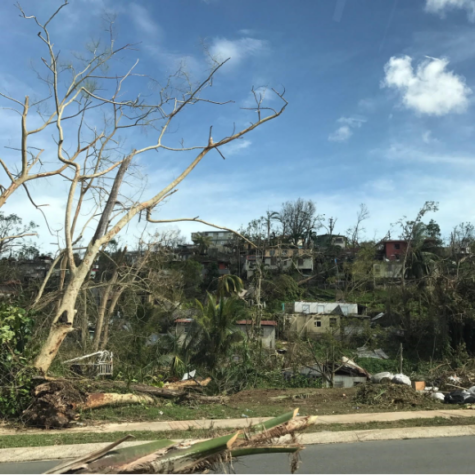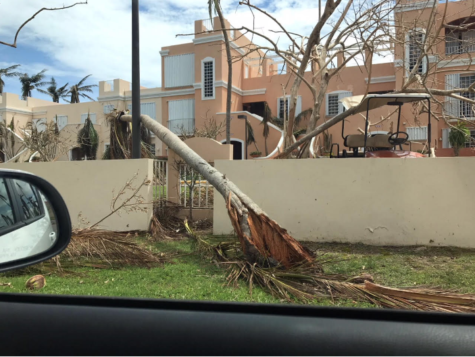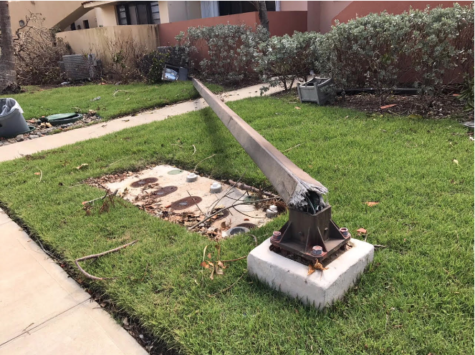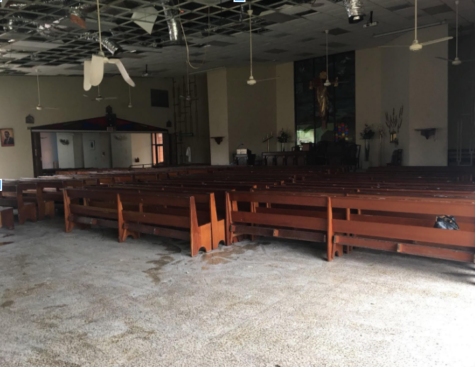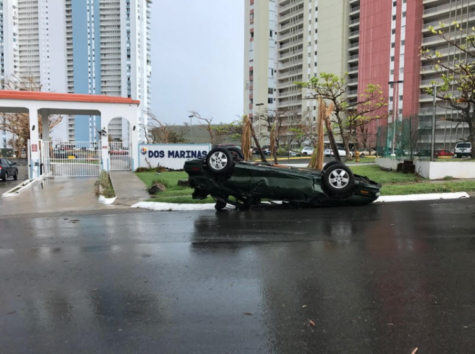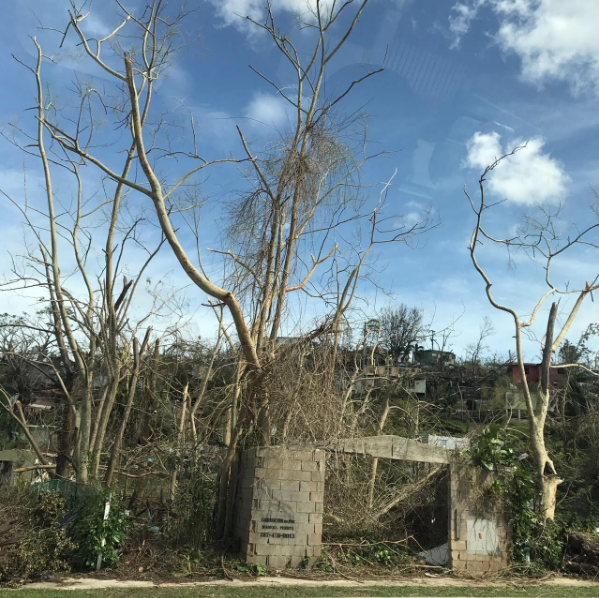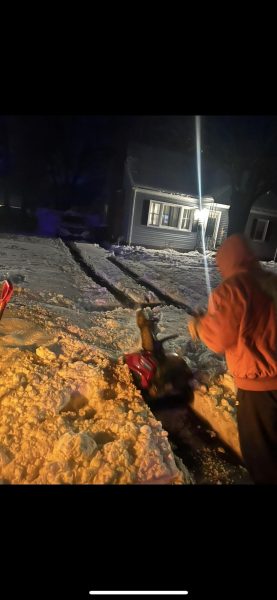Still In the Eye of Hurricane Maria
Hurricane Maria hit September 20, 2017. It was a the most devastating hurricane in American history with sustained winds of 170 to 180 miles an hour, and some winds ratcheted up to 200+ miles an hour. The winds rivaled that of a tornado. “I saw as the storm shutters flew away,” described Diana, a Puerto Rican native from Guaynabo. The hurricane lasted approximately four hours and engulfed the whole island of Puerto Rico.
As this force of nature tore through Puerto Rico, people were scared. They felt hopeless and like there was nothing they could do: “It was a game of survival,” said Lucy Anza. Fearing for her life during the events of the hurricane, Anza said, “You didn’t know what was going to happen next.”
The week that followed the hurricane was described as the worst week because there was little to no help for the island: “The first week was the worst, it was hot and there was no power or water, plus my family would fight all the time. If I wanted to get some gas for my generator or some ice for my food or drink, I had to wait in a five to six hour line, and when I got to the end of it, it was still uncertain if I was going to get something,” said Nathan Colon. Nathan went to the gas station five days in the first week and each time came back home with nothing.
Also in this first week there were raids of people, armed with guns, stealing gas, water, food and ice. Diana Diaz said, “It felt like the end of the world; no gas no food no nothing.” She heard the shots as the place she lived next to was robbed.
Even with all the chaos happening around them, people came together and helped each other. And, after the first week, things started to look better for the islanders; resources were finally making it to more places, and there was more security on duty. The Puerto Rican spirit was still alive as people were chanting, “Yo soy boricua pa que tu lo sepa,” meaning “I am Boricua just so you know,” It’s their way of saying that they are proud of being Puerto Rican, or “Boricua.’’
Things are continuing to look up for Puerto Rico, but it’s a slow process. One of the reasons why it’s slow is because of the withered infrastructure of Puerto Rico’s power grid. Completely fixing Puerto Rico’s power grid might cost upwards of $840 million. Today about 75 percent of the island has power, but that leaves another 25 percent without power and some of them without water. Right now it is estimated that the power will fully return around June.
Many Puerto Ricans feel they are not receiving as much help as they need despite what the United States says. FEMA has distributed 6.2 million gallons of bottled and bulk water in Puerto Rico; however, this only equates to 9 percent of the island’s drinking water requirement as the World Health Organization (WHO) concludes that each person needs at least 2/3 of a gallon per day. Some residents are so desperate for drinking water they have broken into polluted wells at industrial waste sites.
The United States government has not stopped sending funds, but it’s been in small amounts and slowly. Even though Hurricane Maria was more devastating, FEMA deployed 1,700 personnel in Puerto Rico, that’s 900 less than the 2,600 FEMA personnel reportedly still in Texas and Florida. And even though 60,000 homes needed roofing help, only 38,000 tarps were delivered.
Most Puerto Ricans stayed, but there was a large number who went to different parts of the U.S., mainly Florida. According to state officials, as many as 600 children have enrolled in Connecticut schools since the hurricane, and as many as 11,000 are expected in the following years.
With all of this, the island has been put in the world’s eye. Thankfully many are still helping out. The Connecticut Association of Schools even offered support, and Hall was one of the biggest donors in this charity event.
“Although there have been huge improvements, people are still scared,” Diana said. “Everything is getting better now, but with the other hurricane season coming, I feel scared.” The amount of people on the island who have reportedly tried to kill themselves since Hurricane Maria hit the island has more than tripled. From November 2017 through January 2018, a crisis hotline run by Puerto Rico’s Department of Health received 3,050 calls from people who said they had attempted suicide. This data was released in a report in January by the health department’s Commission for Suicide Prevention.
Even more people called the hotline to report suicidal thoughts (as opposed to those who attempted suicide). About 9,645 people who called the hotline in the past three months said they’d thought about killing themselves, a 83 percent jump from the same time last year. The rate of Puerto Ricans who chose to end their lives is growing exponentially. The suicide rate in 2017 was the highest it has been since 2013.
“It’s just extraordinary that it is still so far away from being 100 percent recovered,” said Susan Tierney, a senior adviser for Denver-based consulting company Analysis Group who testified before a U.S. Senate committee on efforts to help Puerto Rico recover.

